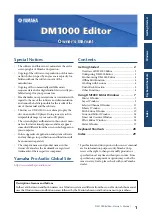
A-61635 December 2010
A-3
Page Setup
(Scanner Settings Profiles) — page setups hold all of the settings
used to tell the scanner how to capture images. These include scan settings
(e.g., Black & White, Grayscale or Color, one-sided or two-sided scanning) and
imaging settings (i.e., rotation, resolution, etc.)
Kodak
Capture Pro is installed with many pre-defined settings to capture
images or you can easily create your own custom profiles.
Page setup is a two-stage process:
• First, setup a scanner-specific “scanner profile” in the scanner’s driver which
contains the physical scanning settings. This tells the scanner how to
capture the images (i.e., resolution, front/back, scanner imaging
enhancements, etc.).
• Second, setup a Capture Pro Software Page Setup that contains the
“scanner profile” to use when scanning and any software-related settings for
scanned pages. These include any image rotation (if not supported by the
scanner), blank page removal, image merging (join both front/rear of a
check into a single image file) or image splitting (split an A3 into two A4
images), etc.
Scan Cache
— the location where images are stored after being scanned into
a batch and before the batch is processed. By default, the scan cache is
defined to be on the local hard drive (e.g., C:\) of the scanning PC.
Side
— one page has two sides, front and rear. With single-sided pages, the
rear is blank.
Simultaneous scanning
— see
dual stream.
System Output Destination
— determines the image format (e.g., TIFF, PDF,
JPEG) and output destination for a batch that is processed. Included are the
name and output directory structure for image files and index files.
TIFF
(Tagged Image File Format) — a bitmapped graphic file format that is usable
for color, grayscale and black and white images.
















































